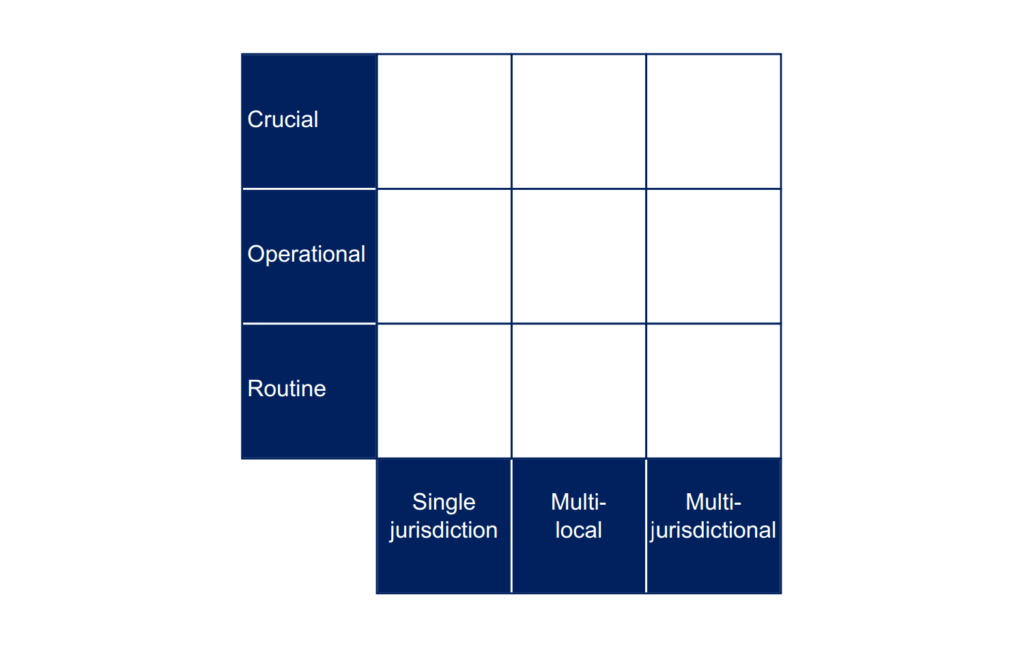Segmentation Of International Work
While some observers express skepticism about the need for, and viability of, some of these new international players, there is no question that leading companies continue to build their businesses around the world. The global economic balance of countries is shifting and will continue to shift, with the expectation that emerging market economies will overtake many western market economies over the next several decades. This dynamic creates a need for international law firms, and a need for some firms to think outside their own geographic boundaries.
A recent study reported that so called ‘large enough’ firms are benefitting from a shift in work from large firms to ‘large enough’ firms. Our experience working with both mid-size and large firms indicates that this is not happening across the board, however exploring that topic in more depth is for another day. One important area where we definitely find the opposite trend, where work is clearly moving to larger firms, is for matters with a cross-border or international element.
Based on our experience, we see signs that clients are increasingly attracted to the new international firms. Both in our work with law firms and our work talking to the clients of firms on their behalf, we see a shift in buying patterns when clients have a legal matter with a cross-border element. Historically, clients, particularly those whose international needs might be episodic rather than regular, would go to their established outside counsel with international matters. If the firm did not have capabilities in the right places they would rely on a ‘best friends’ relationship, or membership in a network, or referral relationships, to get the work done. Because most competitor firms had similarly limited geographic capabilities clients did not base their buying decision on differences in geographic capabilities and tended to focus instead on historic relationships. But, with the emergence of increasing numbers of firms with multi-jurisdictional reach, clients are increasingly choosing firms with an international footprint rather than relying on their domestic counsel when their work requires cross-border capability.
For many years clients have segmented their work and selected outside counsel primarily based on complexity (the pyramid of crucial/bet-the-company, integral/operational, and routine work for example). Today, client buying decisions increasingly include a geographical dimension as well – from local, to multi-local (multiple matters occurring in multiple jurisdictions), to multi-jurisdictional (a single matter occurring across multiple jurisdictions). This creates a matrix of work types, with different firms competing in different parts of the matrix.

For multi-jurisdictional:complex work, the premier firms are likely to be short listed for consideration, as has been true for some time – some working with their own offices in other jurisdictions, some with independent firms. There is, however, now more competition in this segment from some of the emerging newer generation of international firms. For multi-local:operational matters, which in the past might have been undertaken by a series of independent firms in the markets in question, the emerging international firms are much more likely to be considered for that work today. As the market continues to evolve it may become increasingly difficult for firms who operate primarily in a single jurisdiction to be considered for work with a multi-local or multi-jurisdictional dimension.
If ‘large enough’ firms are gaining traction, is there such a thing as ‘international enough’? At the moment, the answer is probably yes. While international law firms are developing at a rapid pace, the market is still relatively immature, with few players who are truly operating on a global basis. In our view, today’s market offers room for additional international firms. That being said, there is not the room or the need for all law firms to develop broad international platforms. Some primarily domestic firms may be able to continue to compete for work with an international dimension through best friends, networks and referral relationships. But as international firms become more entrenched and more integrated, the work that goes to the international firms vs. primarily domestic firms with ‘best friends’ will inevitability become segmented and far more competitive.
While there is no single path or answer that emerges from this competitive dynamic, firms must recognize that the landscape is changing and the ability to compete effectively for international work is being impacted. If a firm’s work in this area is episodic and not core to the firm’s practice such changes may not be particularly problematic. If this work is critical to the firm’s key clients then the strategic implications will be more significant.

